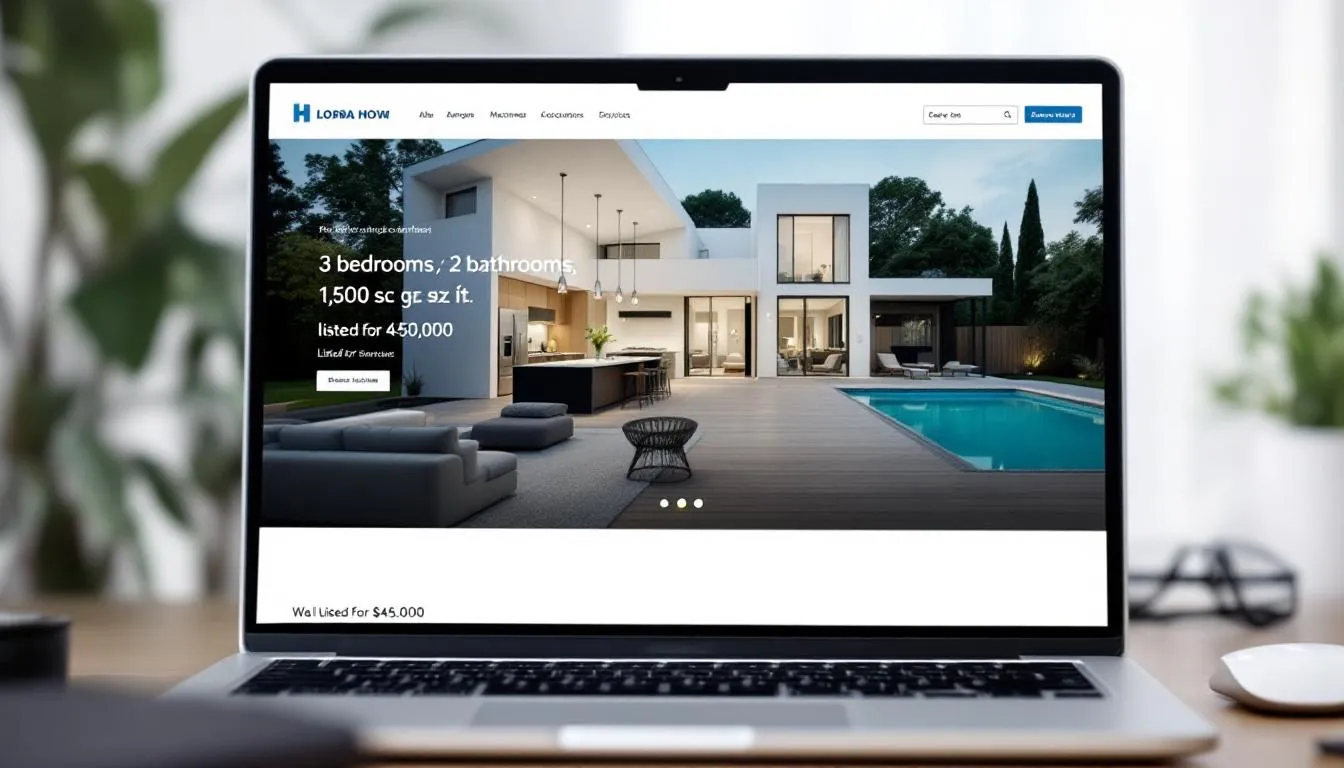- 🏠 43% of home sellers in early 2025 reduced their asking price due to market conditions.
- 📉 Listings gain the most attention in the first 2–3 weeks, making initial pricing critical.
- 📊 Price reductions cause listings to resurface in buyer alerts and platform visibility.
- 📬 Lack of offers or showings after 15–21 days often signals a price misalignment.
- 💰 Carrying costs from delayed sales can surpass the value of a timely price reduction.

Home Price Reduction: How Should Agents Tell Sellers?
Getting a home's price right is tricky. But when a home stays on the market too long and fewer people come to see it, agents often need to talk about lowering the price. This is one of the hardest things a real estate agent does, especially when the market is slowing down. In Las Vegas and other changing markets, agents need to understand the market and also talk to sellers with care. And 43% of sellers had to reduce prices in early 2025, so more agents need to learn how to have these talks.

Set the Stage Early
A good way to deal with possible price cuts later is to talk about pricing flexibility from the start. When you first meet a property owner, make your listing presentation about real estate pricing as a changing plan, not something you set once and forget. Explain that the real estate market acts like a stock market: it is active, sensitive, and responsive.
Talk about pricing in steps. For example:
- Step 1: Your first plan for listing, based on recent sales, the home's condition, and what buyers want.
- Step 2: Adjustments made in real time, guided by what buyers do and how the market reacts.
- Step 3: Changing the price again, if needed, to fit the best price range.
Set goals early, like checking the price again after 15 showings or 21 days with no good offers. This helps sellers see a future price cut as a smart move, not a defeat. It makes changes seem normal and gets sellers ready.

Watch for Silent Market Signals
Not every sign of an overpriced home is clear. Sometimes a property quietly shows it has the wrong price for the market. Spotting these signs early helps agents act before too much time and money pass.
Look for:
- Extended Days on Market (DOM): If your listing stays on the market 25% longer than the local average, it likely means the price is off.
- Less Showing Activity: Fewer or no walk-throughs planned, even if the home is on big websites and marketed well.
- No Second Showings: If people look once but do not come back, buyers are not seeing the value.
- No Feedback or Offers: If questions stop or people do not talk after showings, the market has likely made its decision.
In Vegas and similar fast-paced markets, getting early attention is very important. A quick drop in interest might mean your listing price is off, even by a little bit.

First Impressions Count — Time is Tight
You only get one shot at a strong launch. Real estate websites like Zillow, Realtor.com, and Redfin often put new listings at the top of buyer searches. This “new listing bump” gives the home the most exposure in the first 7 to 21 days.
But if the price is wrong during this important time, buyers will scroll past and probably will not look again. Worse, pricing too high can make buyers suspicious. They might think the home has problems or is not good.
Lowering the price in a smart way often makes alerts go off again and gets more people interested:
- Zillow shows price drops in email updates.
- Redfin adds listings with changed prices to new search results.
- Buyer agents tell interested clients again when a home goes into a new price range.
It is important to match your client's hopes with how these websites work. This helps you act fast.

Let Data Lead the Way
As an agent, your best tool is not what you think; it is data. When you suggest lowering a home's price, gather different types of data to make a case based on facts, not feelings.
Good tools include:
- Comparable Sales (Comps): Look at similar list prices, but also final sale prices and how long homes stayed on the market.
- Pending Listings: Homes now under contract show where buyers are looking and help set a fair price.
- Price Reduction Success Stories: Show examples from your MLS or broker network of homes that dropped 2–5% and sold within 10–14 days.
- Valuation Tools: Altos Research, which tracks current home pricing numbers and market activity, helps sellers see where their home stands in market changes.
Give a pricing review report as a PDF or on a tablet. This makes your suggestions more believable and easier to see.

Buyer Feedback Is Free Research
Open houses and private showings give very helpful information that people often miss. Start collecting buyer feedback early. Group it by common topics and how often they come up.
For instance:
- Condition Comments: “Kitchen feels outdated,” “Carpet looks worn.”
- Layout Objections: “Bedroom too small,” “Living room lacks flow.”
- Pricing Resistance: “Great house, but not at that price,” or “Liked it, but will wait to see if there’s a drop.”
This collected feedback helps you take emotion out of the talk and focus on what buyers often say. If seven out of ten visitors bring up the same problem, it is not just a random comment; it is what the market thinks.
Scripting Tip:
“Let’s look at what buyers are consistently saying — it helps us understand what’s standing between your home and an offer.”

Bring Goals Back Into Focus
Sometimes sellers get stuck on a price that does not fit their money or life goals. Bring the talk back to why they want to move.
Ask reflective questions:
- "Are we still on track with your relocation timeline?"
- "How important is it for you to close during this school semester?"
- "Are you comfortable risking another 30 days at this price?"
Show them the cost of missed chances. A $15,000 price cut might seem big. But if keeping the home listed at full price adds three months of mortgage (+$9,000), taxes, insurance, and utility costs, the numbers often show a quicker sale at a lower price is better.
You can use net sheet calculators to show them how different situations change their final profit.

Pricing Adjustments Show Confidence
Price cuts should not feel like giving up. They show confidence and smart planning. Talk about price cuts as early actions that make the home more visible, show sellers are willing to work with buyers, and raise buyer interest.
Main messages for sellers:
- “This puts your home in front of new people and gives it a higher spot in agent searches again.”
- “Most buyers set alerts for price drops. This is a chance for a lot of new interest.”
- “Sellers who are serious change quickly. Buyers see that as a sign they will get a fair deal.”
If you have a clear reason for changing the price, you can guide the story and keep sellers' trust.

Address the Cost of Waiting
Sometimes, seeing the numbers clearly helps. Help clients compare the cost of waiting with the cost of lowering the price:
| Cost Category | Monthly Estimate |
|---|---|
| Mortgage (P&I) | $2,500 |
| Property Taxes & Insurance | $700 |
| Utilities & Maintenance | $300 |
| Total Carrying Costs | $3,500/month |
You can say:
"Instead of waiting for $600K, selling for $585K today might leave you with more money overall once you count the costs of owning the home and what you miss out on."

Use Empathy — Not Just Market Logic
Not every decision about home prices comes from numbers alone. Homes are not just investments; they are very personal. Especially in a market like Las Vegas, where owners may have bought when prices were highest during the pandemic, sellers feel pressure to get the same or better prices.
Acknowledge that:
- "I understand this feels like a hard turn from what you expected."
- "It’s completely normal to hope for a better scenario — my goal is to protect your larger plan."
How you speak during these price cut talks really matters. Showing you understand helps build loyalty, trust, and working together.

Present a Choice Framework
Instead of just telling sellers a lower price, include them in a step-by-step plan. This plan gives them options but also shows why acting fast is good.
Example plan:
- Drop 1%: A small push to get cautious buyers interested again.
- Drop 3%: Match top comparable homes and get more eyes on the listing.
- Drop 5%: A big change to draw many offers.
You could say:
"Here are three clear plans we can use. Each has a goal and a time to check results. If we do this today, we will watch interest and talk again if needed.”
This feels more like a shared plan, not a command.

Add Value, Not Just Cuts
Sometimes a small spend on how the home looks can increase its appeal or even reduce how much the price needs to drop. Before cutting the asking price, try these ways to make it look and feel better:
- Get better photos: Use shots from sunset or drone views.
- Add a video walk-through: This helps bring in buyers from out of town.
- Do a small staging update: Clean up, make rooms brighter, change hardware or throw pillows.
- Give disclosures early: A pre-inspection can show you are honest, build trust, and support slightly higher asking prices.
Change the focus from cutting price to adding value:
“Instead of only cutting the price, let’s make buyers see more value. This leads to a stronger offer.”

Seller Success Stories from Las Vegas
Nothing shows a plan works like seeing it succeed. Real examples help sellers who are unsure see what can happen with a quick price cut and some small marketing changes:
A Henderson seller listed a 4-bedroom home at $610,000. After almost no interest in 21 days, the agent cut the price by 2%. The agent also made the listing photos better by taking them at sunset, which made people feel more connected to the home. Showings went up by twice, and the home got competing offers by day 30.
A Summerlin home first priced at $725,000 had few visitors. The agent cut the price to $699,000 and added a buyer benefit (a credit for closing costs). This made the home appear in many saved Zillow searches again. It got a full-price offer 11 days later.
In North Las Vegas, a seller did not want to lower the price but agreed to paint the cabinets and update the yard. With a 3% price cut, these changes led to two offers within five days.
In each case, acting quickly and smartly, not being stubborn, helped close the deals.

Change the Story: Be Their Partner
Many sellers like honesty when it comes from a place of loyalty and knowledge. Do not apologize or try to make the news easier. Instead:
- Present it as market feedback, not your own idea or opinion.
- Remind them of the common goal: helping the seller move on to their next step in life.
- Show you mean it by taking action, not just by talking.
Say:
"I’m invested in your success here — not just in listing this home. I’d love better news, but honesty helps us win sooner.”
Advisors deliver the truth with empathy. Be their guide, not their critic.
Price Smart, Sell Fast — Before the Market Decides for You
Pricing wisely and quickly is no longer just an option in today's real estate market; it is needed. As the numbers show, almost half of 2025 home sellers cut their asking price to find the right buyer. Knowing when to change course is as important as knowing how to start.
When buyers stall and homes sit — the market starts negotiating for you.
Stay ahead by using up-to-the-minute feedback, data, and a plan you make with the seller. In real estate, timing is money. Help sellers use both well.
Citations
Clever Offers. (2025). How to sell your house: Real seller data for 2025.

